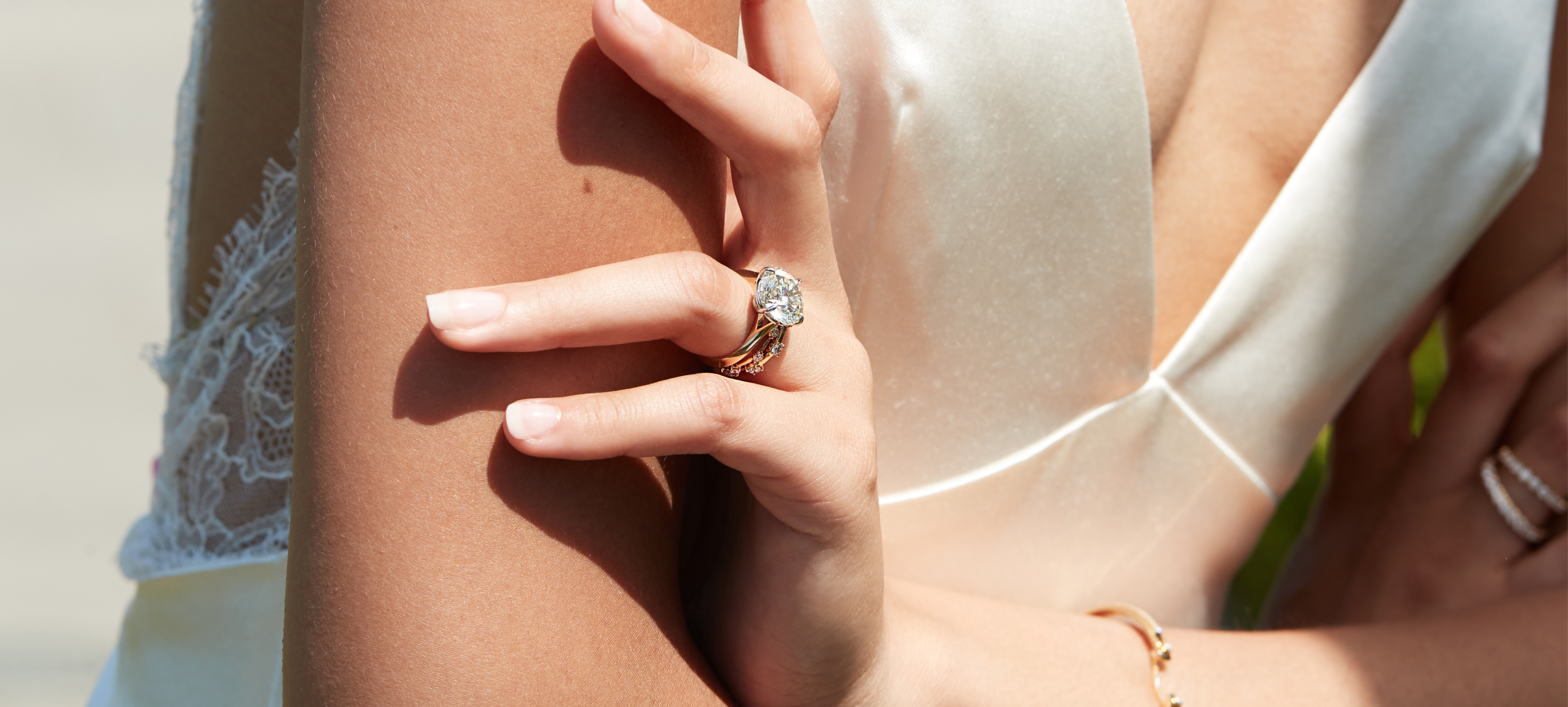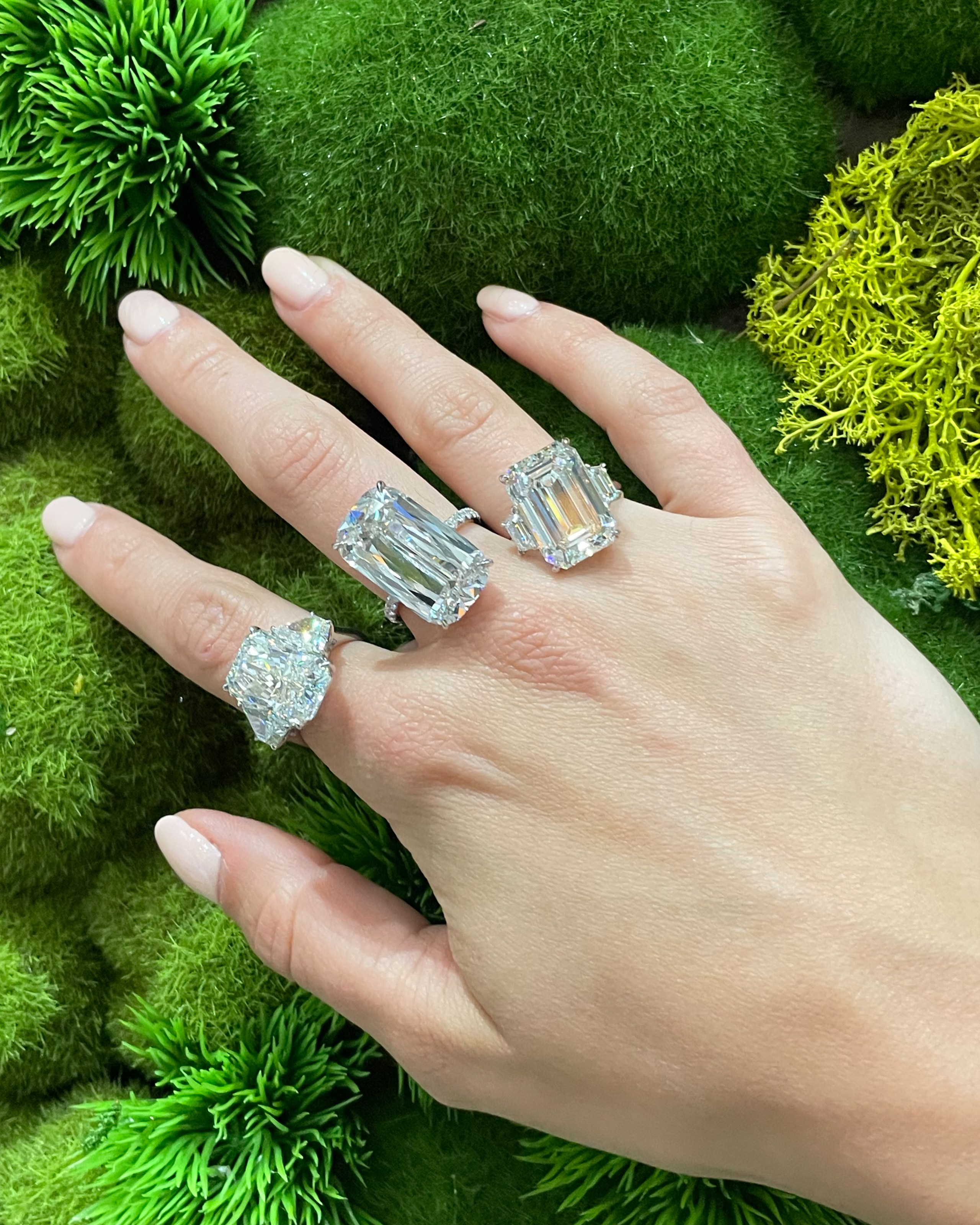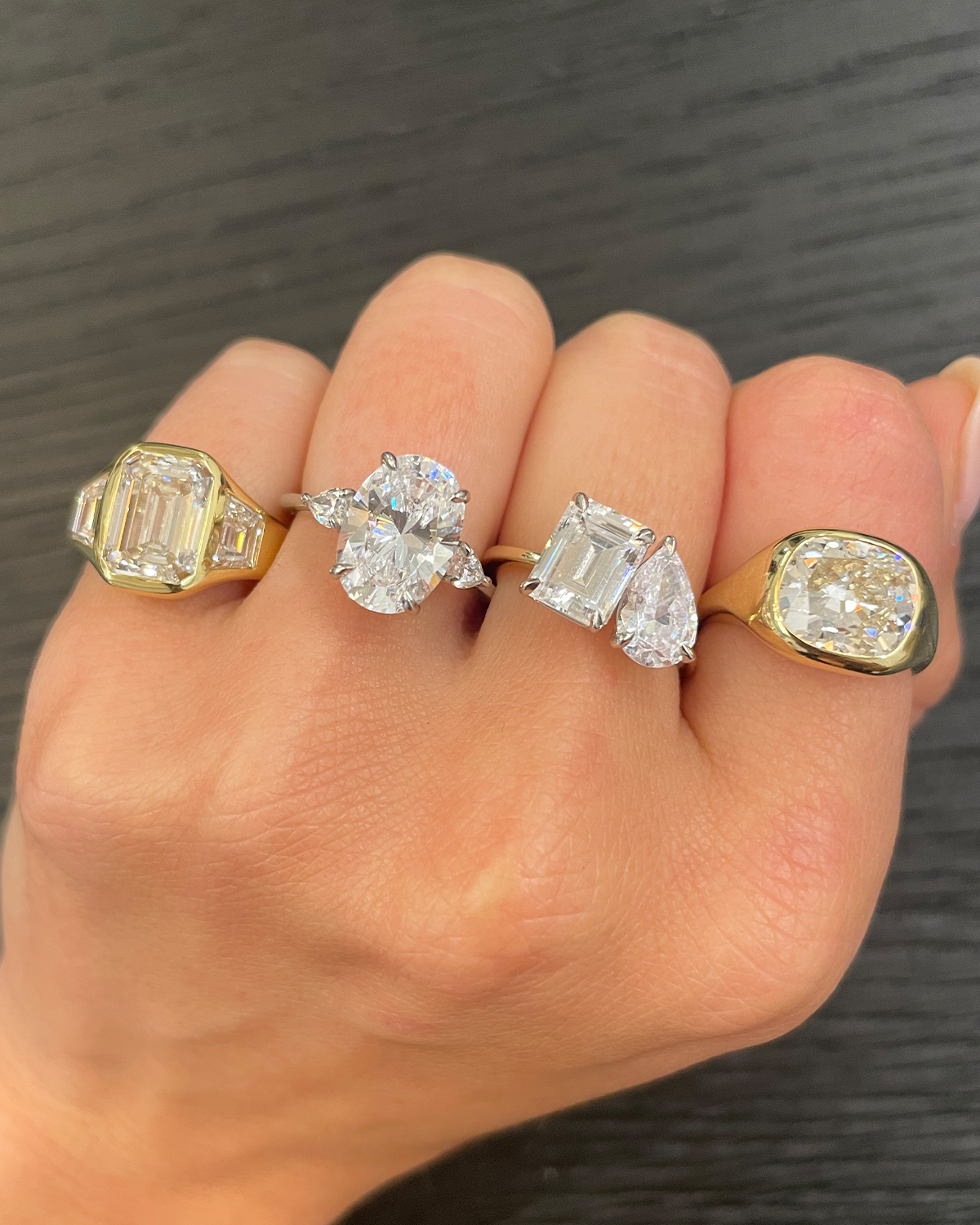A Guide to Everything You Need to Know About Diamond Jewelry Insurance

Few items can rival the sentimentality of natural diamond jewelry, yet, within its realm lies a responsibility that should never be overlooked: insuring those cherished heirlooms. You may think your pieces are safe, but what if the unthinkable happens? Theft, fire, loss…Will your homeowners or renter’s insurance cover it? If not, then how do you get sufficient jewelry insurance? Can you add it to your existing policy, or do you need a separate policy? Maybe you need a separate insurance company altogether? Rest easy, we’ve got the answers to these seemingly complicated questions that will put your mind at ease and allow you to wear all of your diamonds without any of those worries.
Does My Homeowner’s or Renter’s
Insurance Cover My Jewelry?
Most standard home, condo, or renters insurance will offer some coverage for jewelry. However, this coverage is included in the ‘personal property’ part of a policy. This will usually cover jewelry lost in catastrophic events like a fire. For example, if you have $100,000 of personal property coverage and there is a fire, that money has to be used to replace everything (clothes, furniture, electronics, etc.), including your jewelry. Many people find out too late that this is not sufficient. Most importantly, traditional coverage is usually very limiting and will not cover things like loss or damage and will limit theft coverage for jewelry to only $1,500, regardless of the amount of personal property coverage. Any claim for jewelry will affect your whole policy, more than likely raising the cost of your policy. Lastly, the insurer will subtract your homeowner’s deductible from a claim, so if you claimed a loss of $1,500 and your homeowner’s deductible is $1,000, then you would only end up with $500.
Tip: If you have jewelry totaling a value of more than $1,500, you should consider adding additional coverage specifically for jewelry.

Adding Additional Converge
to Existing Insurance
If you find that your existing home, condo, or renters insurance is not sufficient, there are a couple of options to increase your coverage on the same policy and with the same insurance company.
Blanket Coverage Or a Rider
The easiest coverage you can add for your jewelry is blanket coverage; this may also be called a rider. This coverage insures a specific category of items, such as jewelry. If your normal policy covers jewelry theft up to $1,500, the addition of blanket coverage can raise that to $5,000. Depending on the insurer, this coverage can also expand the type of claims that are covered to include loss. Also, some insurers offer this coverage without a deductible. It is important to remember that blanket coverage for jewelry can rarely be increased over $5,000, and claims can still raise the cost of your home insurance.
Tip: This could be a good option if you have a large jewelry collection, but none of the pieces are particularly valuable on their own and not over $5,000.
Personal Property Floater
While blanket coverage will cover a whole category of items as a group, a floater, also called scheduled insurance, will cover a specific item. This coverage is supplemental to your existing home, condo, or renters insurance. Unlike standard coverage, a floater will cover the full insured value of each item for theft and even loss, usually no matter where the incident occurs. This type of coverage has little to no deductible. To purchase a floater, each item you would like to be covered will need to have its appraisal.
Tip: A floater is the safest type of coverage if you own any jewelry valued more than the standard coverage amount; however, a claim still may affect the cost of your home insurance policy.

Policies with Specialty Insurance Companies
There are insurance companies that specialize in insuring jewelry completely separate from your existing home insurance company. These companies offer much more robust coverage than most other insurance, often including almost any type of loss unless specifically stated otherwise. Unlike other types, specialty insurance can also include preventative maintenance, such as repairing clasps and tightening stones, as well as coverage for chipped stones or damaged pieces. Importantly, instead of monetary reimbursement after a claim, specialty insurance companies usually pay your jeweler directly after the piece is replaced. There are several specialty jewelry insurance companies, most with similar offerings but each with unique aspects. Below are the most recommended companies and ways that set them apart. It is best to choose which aspects are most important to you based on your fine jewelry collection and get free quotes from each to find the best value. In most cases, quotes can be done quickly online, and coverage can be attained in minutes.
Tip: Speciality jewelry insurance is the safest way to insure jewelry, and if a claim is made, it will not be on your home insurance record or risk increasing your home insurance costs. However, if you are looking for a cash payout instead of replacing the piece, this type of insurance may not be for you.
- Jewelers Mutual has more than 100 years of experience in insuring jewelry They allow you to work with your chosen jeweler for replacements and also pay for preventative repairs. They also offer no minimum or maximum coverage amounts.
- Zillion conveniently offers instant coverage to customers of their retail jeweler partners at the point of sale. The immediate protection benefit is available for both in-store and online purchases, and there are no applications or appraisals needed. Zillion is unique in that consumers have time to enjoy a protection option while they decide if Zillion’s annual insurance is right for them. Insurance is only available when purchasing from Zillion’s partner retailers, which could be limiting for some consumers.
- Gem Shield does not require appraisals to get coverage for items valued under $5,000, which can make it easier and faster. Uniquely, they offer automatic coverage for newly purchased jewelry with a 30-day window for you to add to your policy. However, they have lower maximum coverage limits than most companies at $35,000 per piece and $100,000 total.
- BriteCo’s stated rates are lower than the industry average, starting at 0.5% of the value of each piece. They could be considered one of the most convenient options as coverage can be attained online, at the point of sale, and through e-comm as long as the selected jeweler is participating. BriteCo also offers coverage of 125% of the appraised value of each piece.

What Does Jewelry Insurance Cost?
On average, jewelry insurance costs approximately 1-2% of the value of the piece of jewelry per year. This means that a $5,000 diamond ring could cost between $50-$100 per year to be fully covered. The exact cost could depend on several factors, including the deductible you choose, your location, the value of each piece and how many are insured, and the type of reimbursement. Some companies also offer discounts if you have a safe or home security system, so be sure to keep that in mind.
How To Make Things Easier and
Decrease Your Chance of a Loss
- Keep all jewelry receipts and digitize or take photos of them so they never get lost.
- Get appraisals for any piece of jewelry worth more than $2,000 and have your appraisals updated every 3-5 years as natural diamond jewelry continues to grow in value over time.
- Take a good photo of every piece of fine jewelry.
- When you are not wearing pieces, store them in a safe place. If possible, do not store your whole collection in the same place to decrease the chance of it all being taken at the same time.
- When traveling, only take the pieces you wear and store them in a hotel safe if you are not wearing them.
- When traveling, the pieces you leave at home should be stored in the most secure place possible.
